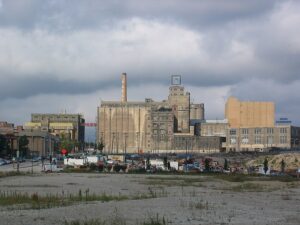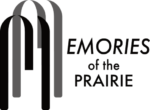How Pabst Blue Ribbon got its name

Pabst Blue Ribbon cans.
Pabst Blue Ribbon is an iconic American beer. Its story begins in Milwaukee, Wisconsin, a city that has been a brewing mecca since the mid-19th century.
Milwaukee’s location on Lake Michigan gave breweries access to freshwater and an immigrant labor force. These were key to the booming beer industry in America.
In 1844, a German immigrant named Jacob Best, founded the Empire Brewery, which later became Best and Company.
The origins of the Pabst Brewing Company
In 1863, Frederick Pabst, a steamship captain who had married into the Best family, joined the business.
The brewery quickly grew after the death of Milwaukee brewing competitor, C.T. Melms in 1869 and the Great Chicago Fire of 1871. The Chicago fire dismantled the Chicago brewing industry leaving Milwaukee as the main brewery hub in the area. The production of lagers and pilsners was made significantly easier by new refrigeration techniques.
By 1882, the company was renamed the Pabst Brewing Company.

Pabst at the World’s Fair
The name Pabst Blue Ribbon can be traced back to the 1893 World’s Columbian Exposition in Chicago (also known as the Chicago World’s Fair).
The fair was a key moment for showcasing the future that American inventors and architects envisioned. It attracted over 27 million visitors and brought the American Midwest international fame.
Food products including Juicy Fruit, Crackerjack and Shredded Wheat were introduced to the public for the first time. The world’s first Ferris Wheel wowed fairgoers. Westinghouse’s alternating current electricity powered the fairgrounds, which made the format the nationwide standard.
The Pabst Brewing Company entered its flagship beer, Pabst Best Select, into the fair’s beer competition. It won the best beer award.

The evolution of Pabst Blue Ribbon
To celebrate the award, the company began tying blue silk ribbons around the necks of their beer bottles. Enthusiasts of Pabst Best Select gave it the nickname of “Pabst Blue Ribbon”. The company officially adopted the name in 1898.
Throughout the 20th century, Pabst Blue Ribbon evolved from a regional favorite to a national icon.
During Prohibition, Pabst stopped beer production. The company started making cheese and sold more than 8 million pounds of Pabst-ett Cheese. When Prohibition ended, the company went back to selling beer. Pabst sold off the cheese line to Kraft.
Pabst worked with the American Can Company to produce the first beer cans.
During the post-World War II era, Pabst Blue Ribbon’s popularity soared, and by the 1970s, the company was selling over 15 million barrels of beer annually. In 1996, the historic, Pabst Brewery in Milwaukee closed.
In recent years, Pabst Blue Ribbon has made a comeback. Between 2005 and 2010, PBR’s brand volume increased 69%. Younger generations have embraced the brand’s unpretentious image and affordable pricing.



